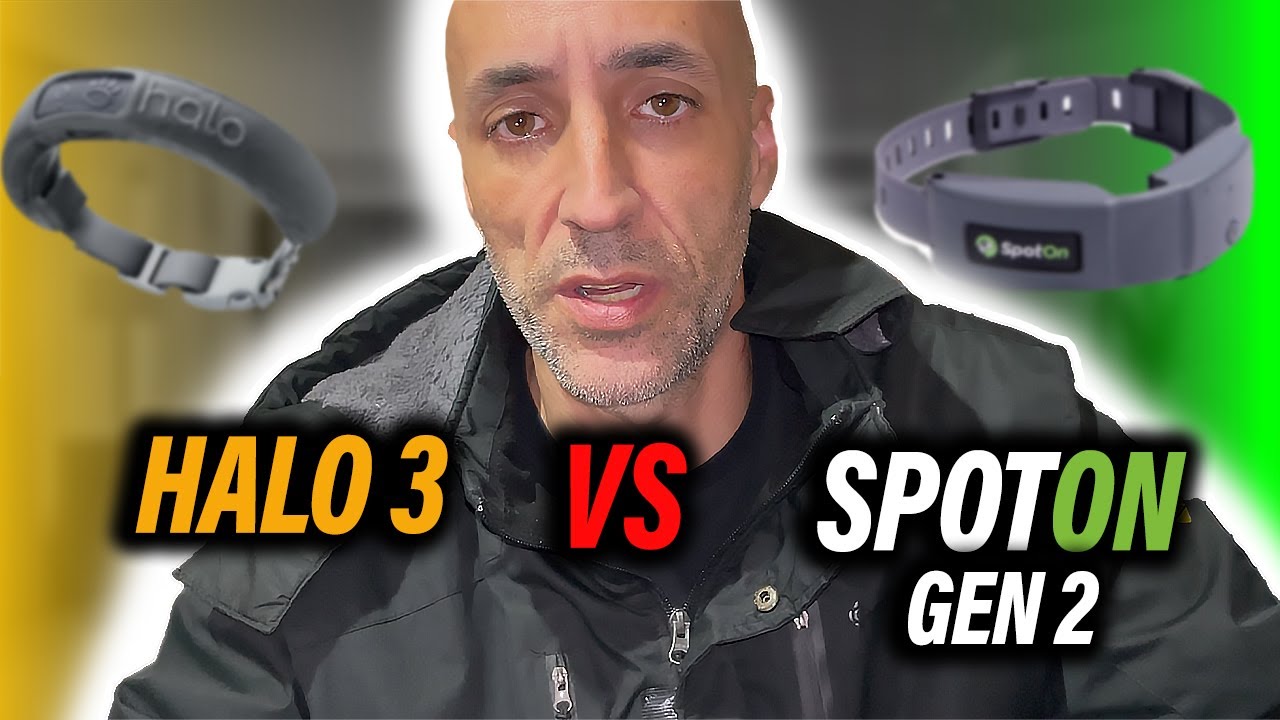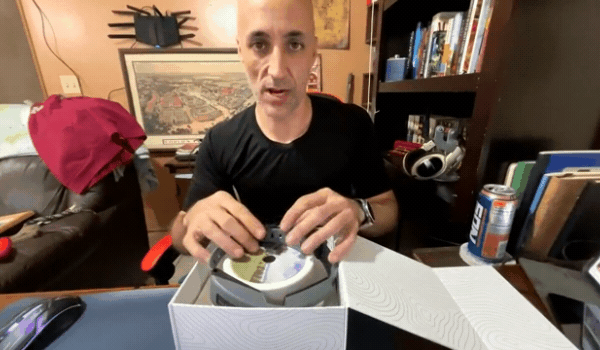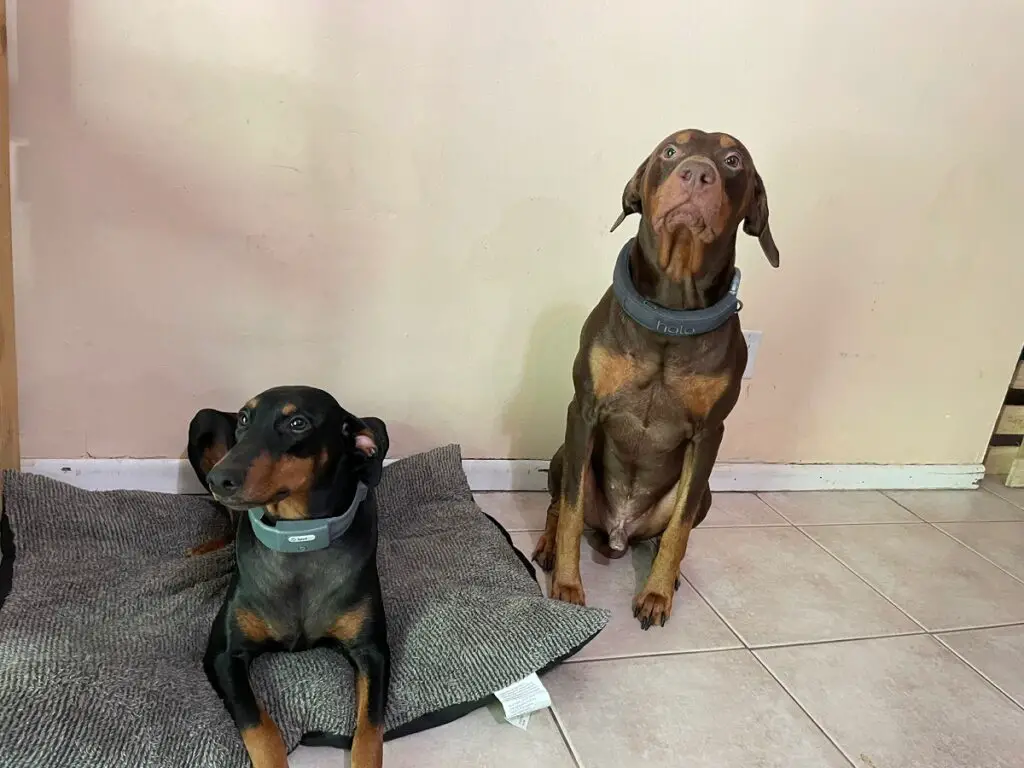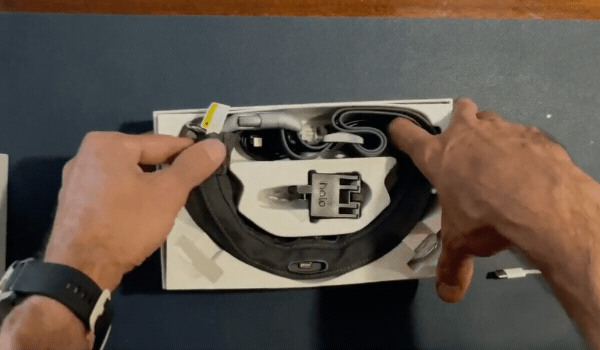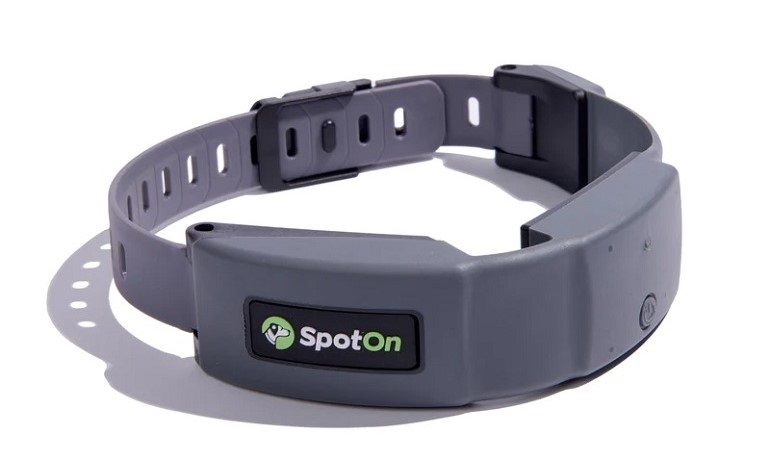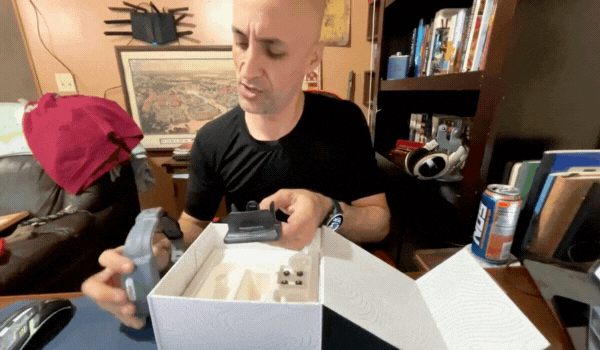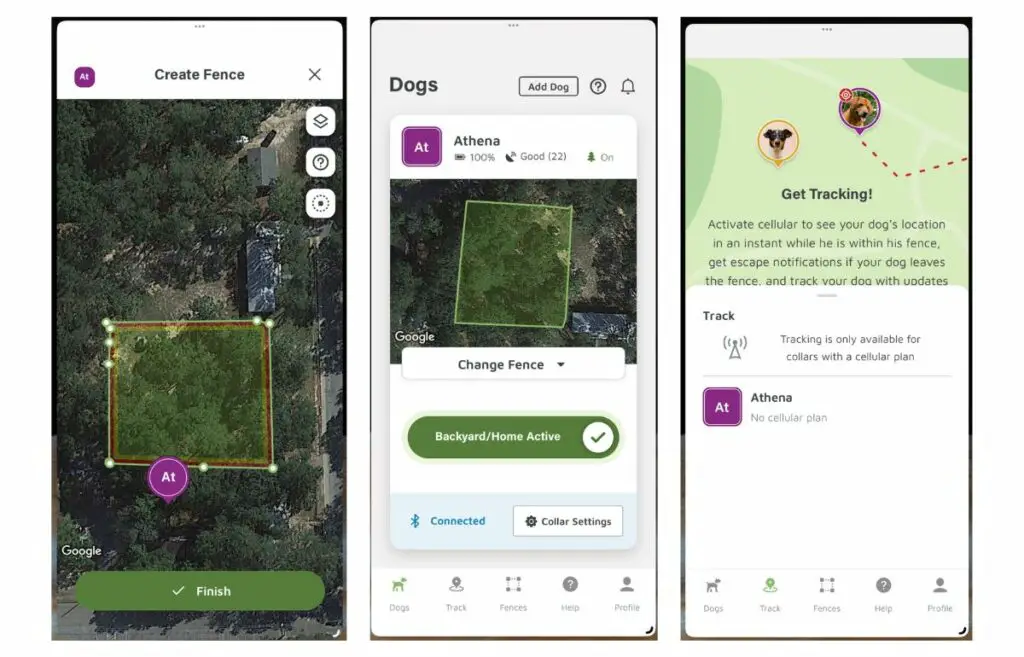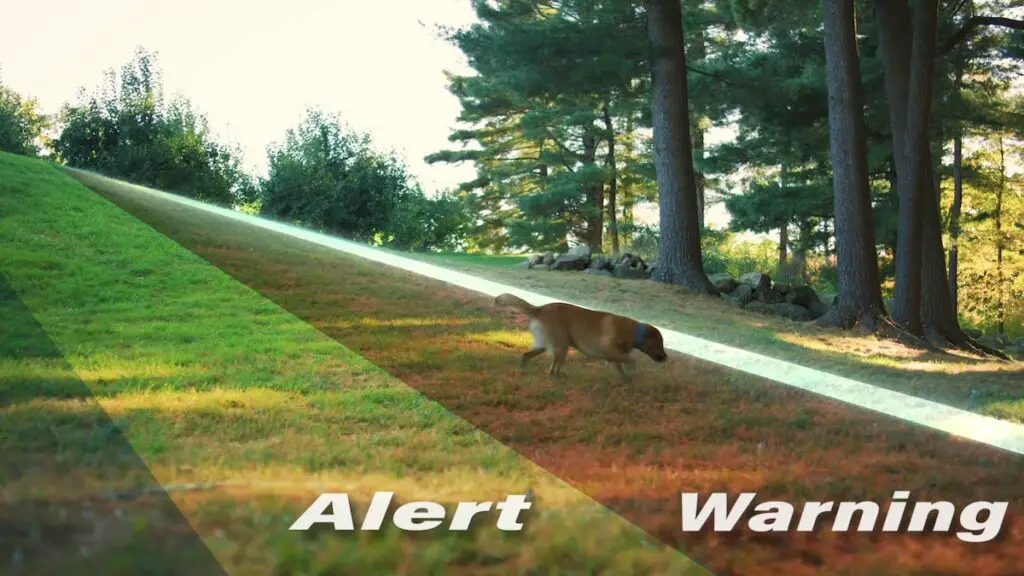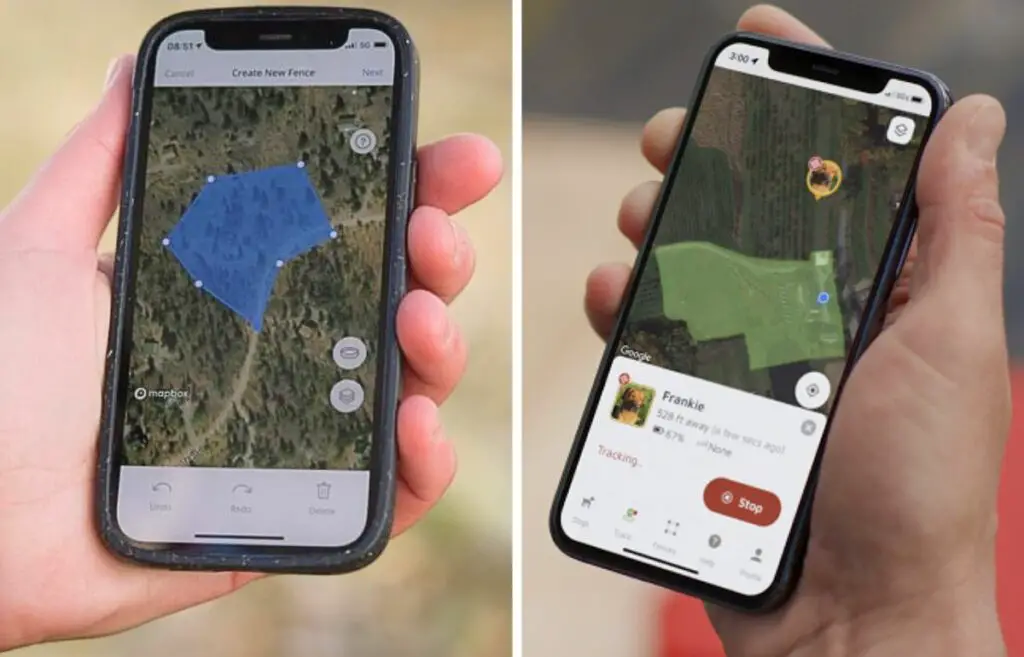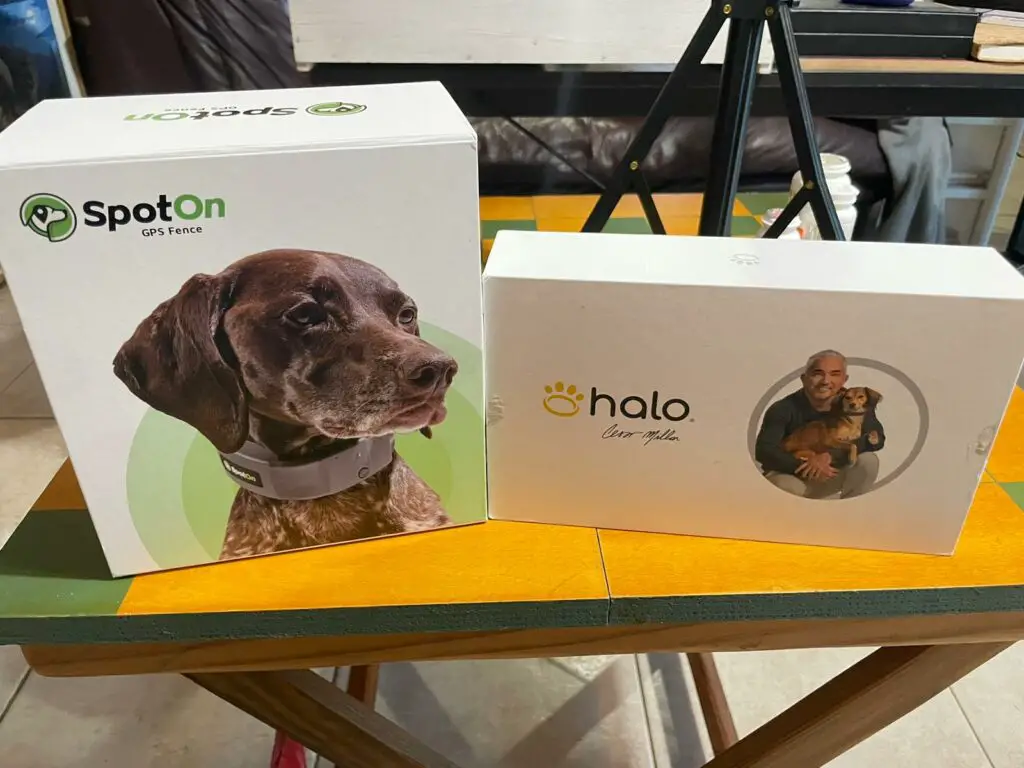Choosing the perfect GPS dog fence can feel overwhelming, but two top contenders constantly emerge: the Halo Collar 3 and SpotOn GPS Fence. Both promise freedom and safety for your furry friend, but which reigns supreme? This head-to-head comparison dives deep into their features, performance, and value. We’ll dissect accuracy, battery life, training tools, and subscription costs, ultimately revealing which collar emerges as the winner for keeping your dog safe and happy. Is it Halo’s advanced technology or SpotOn’s rugged simplicity? Let’s find out.
Not a day goes by when my Nextdoor app isn’t inundated with “missing dog” adverts. The three local convenience stores invariably have black-and-white pictures of missing dogs and the means to reach the owner if they’re ever found.
Basset hounds, terriers, pit bulls, German shepherds, chihuahuas, Great Danes, and more are always on the missing list at some time or another.
With the advent of the SpotOn dog collar and the Halo collar (along with more options than I can count), the missing dog days were supposed to be over. However, there are still a lot of people who are still on the fence about smart collars and their overall efficacy.
As for myself, I’ve spent a good deal of time with both the SpotOn collar and the Halo collar, one for each of my two Dobermans.
What makes each worth your time and investment? Are they really worth it in the long run? In my in-depth analysis of the SpotOn vs. the Halo collar, I’ll show you what forms that well-defined line and which collar is ultimately better suited for you.
Halo Collar Vs. SpotOn Collar
Let’s get one thing out of the way before we start. Neither of these collars is usable (without some serious, DIY modifications) on small to very small dogs. If you own a chihuahua, toy poodle, min-pin, or a similar dog, your dog can jump through these like a circus hoop, just without the flames.
The SpotOn fence collar, at its smallest fitting, is 10″ around, and the Halo is slightly larger at 11″ around. Both of them are very bulky and heavy. Even if you could get them to fit on a very small dog, it’s likely the dog would never be comfortable with it. Just remember to make sure you can fit two fingers between the collar and your dog’s neck.
SpotOn and Halo collars rely heavily on app connectivity, virtual fencing, GPS tracking, and portability. Dig a little deeper, however, and there are some defining characteristics of each that are worth noting if you’re in the market for one.
With some, it’s the tiniest thing that will be the deciding factor. For instance, personally, I prefer the Halo collar’s more streamlined fit (it’s still bulky), though I recognize the SpotOn is a bit better in some technical aspects.
Both Halo and SpotOn have packed a ton of features into their respective smart collars, and your choice will probably boil down to long and short-term costs, along with what you need specifically as dog owners.
Collar Specifications
| Comfort | 7/10 | 9/10 |
| Durability | 7/10 | 9/10 |
| Color | Gray | Gray/yellow/pink/white |
| Size | Small/Medium/Large 10″ to 26″ | Small and (Medium/Large) 11″ to 30.5″ |
| Charging Port | USB-C Carriage | USB-C Magnet |
| Leash Hook | ||
| Battery | 22 Hours | 24 Hours |
| Prongs | Two sets of two sizes | Two sets of two sizes |
| Charging time | 1 hour | 2 hours |
| Adjustment | 4″ to 7″ range | 4″ to 15.5″ range |
| Training | Yes | Yes |
| Carrier | AT&T and Verizon | Universal |
| Subscription | Optional | Mandatory |
| # of Virtual Fences | 1,500 | 20 |
| Waterproof | IP67 | IP67 |
| Coverage | Up to 1,000 acres | Up to 1,000 acres |
Comfort and Durability
The comfort and durability of the SpotOn take a hit due to a couple of factors. The first is that the collar is enormous. My female Doberman (Athena) is a medium-sized dog, and the collar looks enormous on her.
Occasionally, she’ll lash her head from side to side to rid herself of the extra weight. Don’t get me wrong, the Halo collar is large as well, though it’s far more streamlined than the SpotOn.
The second factor is the buckle. When I first received the collar, it was separate from the buckle. The buckle attaches to the collar with a small, pliable rubber clasp on the end of the collar. Whether it’s due to design oversight or my particular collar is really weak, it simply won’t hold onto the buckle. The collar frequently fell off, especially when Athena took off on a run.
Fortunately, SpotOn’s customer service is excellent. They acknowledged the issue and sent me a replacement strap that arrived in the mail in a couple of days. The adjustment range on both collars is fairly extensive, allowing for a wide range of neck sizes (except for small dogs for either collar).
Sizing
The Halo collar only uses two sizes—medium to large and small. SpotOn simply sticks with the old small, medium, and large formula, with a wide adjustment range.
The Halo Collar 3 now features the “Perfect Fit Kit,” ensuring a tailor-made collar fit for your dog’s unique neck size, adaptable even as they grow. Halo collars are designed to cut and replace excess straps using the provided caps and a cap installation press.
Halo Collar
The Price of “Halo Collar” varies, so check the latest price at
Check Price at Halo Collar
Coverage
Both collars cover an immense 1,000 acres, and both partly rely on cellular service, though the SpotOn is restricted to AT&T or Verizon, while the Halo collar is universal. However, SpotOn does not require a subscription for its primary uses, which is a huge leg up over Halo, which barely functions at all without a minimum membership plan.
SpotOn collar provides dog feedback through vibration and sound, even without a subscription. However, cellular service is required to get exit alerts and track your dog on your phone. A 90-day free trial is available with a one or two-year subscription plan.
SpotOn Collar
The Price of ”SpotOn Collar” varies so check the latest price at
Check Price at SpotOn
While you can operate a SpotOn GPS fence without a membership, tracking a lost pup is not a part of the non-subscription plan. Think of SpotOn as the smart collar that includes everything at home and in your yard. Outside of that, you’ll need to pay. Halo, on the other hand, is barely functional without one of their three subscription plans.
Battery Life
Last but not least, the battery life in the Halo 3 is a little higher than that of the SpotOn. However, the SpotOn charges a little faster than the Halo. In my time with both devices, the battery life claims of both Halo and SpotOn held up well within a couple of minutes of accuracy.
Since there are multiple SpotOn and Halo collar variations out there, at this point, It’s easy to get confused about the battery life.
The original SpotOn will last 12 hours, while the Gen 2 has up to 22 hours of battery life. The Halo 3, which is the one I am reviewing and using, has a 24-hour battery. The previous Halo, Halo 2 +, has about 22 hours, give or take a handful of minutes.
Training and Fences
| Training Program | Video included in app | Video included in app based on Cesar Millan’s training program |
| Max Fence Size | 1,000s of acres. According to SpotOn specs | 1,200 mi² |
| Min Fence Size | 0.5 acres | 900 ft² |
| # of Virtual Fences | Up to 20 | Up to 20 |
| # of Saved Fences | 1,500 | 20 |
| Fence Overlap | Up to 20 | Up to 20 |
Training Program
Both the SpotOn and the Halo collar feature companion apps. Each companion app features a number of video training tools you can access at any time. You can access the SpotOn video training programs without a subscription, but not the Halo versions.
Both devices feature video tutorials that walk you through the entire setup process. I’m a visual learner, so I found the videos to be highly convenient and illustrative. I wouldn’t say one was better than the other, as both were information-rich and covered every aspect of the process.
The training videos are excellent and cover the entire aspect of teaching your dog to deal with the collar’s various sounds and prompts.
Of course, the Halo collar and the SpotOn feature static correction levels, though I don’t use either and would advise you to do the same. In the video content, both SpotOn and Halo offer to cover corrective measures that don’t involve shocking your dog.
Virtual Fence Creation
Both SpotOn and Halo fences have a minimum creation space. That’s because GPS is not nearly as accurate as we often need it to be, and there is a degree of shifting when it comes to pinpointing your fence location. Throughout my time with the Halo collar vs. SpotOn, I didn’t notice a greater or lesser degree of shift between the two.
While you can go smaller, SpotOn recommends that your SpotOn virtual fence be at least 0.5 acres in size. SpotOn doesn’t get specific with its maximum size, though it states that its virtual fencing and a maximum of 1,500 virtual fence posts will cover thousands of acres. I couldn’t test the Halo collar vs. the SpotOn when it comes to maximum sizes for obvious reasons.
After all, Halo claims that its dog collar and virtual fence posts are capable of covering 1,200 mi (1,931.21 km)². One thing is certain: both the SpotOn fence and the Halo fence will cover just about any size you need.
However, the SpotOn GPS dog fence trumps the Halo in terms of the number of fences. I personally had no need for more than 5, with a total of 15 fence posts altogether.
While the Halo may have a larger coverage area, you can make far more SpotOn GPS dog fence posts than you can Halo fences.
Overlapping Fences and Range
Not only does SpotOn allow you to create an immense number of virtual fences, but it also allows you to overlap them. Halo is dreadfully behind in this, with only 20 fences and zero overlapping. If you’re wondering why SpotOn is twice the expense of the Halo 3, it’s because of the freedom to create virtual fences.
When it comes to the Halo collar vs. SpotOn, there is no competition in this arena. If you want a dog collar with the capability of creating overlapping fencing until your heart is content, there is only one alternative.
The range of the Halo collar vs. the SpotOn is virtually identical. Though both are drastically different in terms of fencing, overlapping, and number of fences, the 1,000-acre range is pretty accurate. That’s because both use a number of wireless technologies and aren’t dependent on just one.
Another advantage for SpotOn is its unique ‘Forest Mode,’ ideal for yards with dense tree coverage. Once turned on, it enhances GPS sensitivity.
Halo Collar Vs. SpotOn Technology
| # of Satellites | 128+ | 50+ |
| Satellite Systems | GLONASS, Galileo, Beidou, and Galileo | N/A |
| GPS | ||
| Activity Tracking |
The technology in the Halo collar vs. SpotOn is very similar, though both go about things in different ways. The Halo includes GPS tracking, Bluetooth, Wi-Fi, and universal cellular tracking. SpotOn uses AT&T and Verizon, Bluetooth, GPS, and Wi-Fi.
Halo has a slight advantage here since their dog collar is designed to work with cellular technology at no additional cost to you. SpotOn only uses two cell carriers, but you don’t need either one as a part of the tracking package. Does it help? Sure. But SpotOn doesn’t require you to rely on it.
Neither the Halo fence nor the SpotOn dog fence requires cellular, as it’s entirely designed for working to locate your lost dog.
Satellite Systems
Halo utilizes 50+ satellites combined with an Active Antenna system to provide real-time tracking and virtual GPS fences. The dog collar is so large because it’s packing in quite a bit of technology, including PrecisionGPS software, AI, and machine learning.
These combine to work with the universal cellular carriers and GPS for precision tracking. The reason Halo went with universal carriers and unlimited cellular data is that some coverage maps are different, depending on your carrier. Universal usage provides more uniform and reliable tracking. It’s the only GPS collar on the market that does this.
The SpotOn dog collar features the optional use of cellular technology. However, SpotOn makes up some ground on the Halo’s precision tracking by utilizing nearly three times the number of satellites, including GLONASS, GPS, Beidou, and Galileo satellite systems. This means the SpotOn remains connected to roughly 25 to 30 satellites at all times.
I call this a draw. Both collars are more than capable of precision tracking your dog’s location, and the fencing is fairly accurate for both as well. While the Halo wins out on the cellular front, the SpotOn makes up for it with more consistent satellite use.
GPS Fence Boundary
Halo’s collar and a SpotOn dog’s collar are covered, but what about the fencing? How accurate are they? Both fences shift to one degree or another, so you always have to account for that. Plus, the dog collar keys off of an inner boundary, which is roughly ten feet.
What this means is that however larger your GPS fence is, your dog’s freedom of movement is smaller. The fence keys off your dog’s location about 10′ from the fence location. Once the dog closes in on the fence, it will resort to vibration, voice commands, or loud beeps that you’ve worked with the Halo app or SpotOn app to train your dog on.
Location tracking is never a perfect science, and the Halo collar vs. SpotOn collar, in this regard, are roughly the same. Your dog’s location may be more or less constrained, depending on how much the virtual fence shifts throughout the day.
User Interface and Setup
| App | ||
| Home Zone | ||
| Keep out Zones | ||
| Auto Updates | ||
| Forest Mode | ||
| Correction Types | Static, tone, and vibration | Static, tone, voice, and vibration |
| Correction Levels | 1 to 30 static, 2 set tones, and 1 set vibration | 1 to 15 static, set tone, voice, and set vibration |
| Cellular Tracking | Optional AT&T or Verizon | Universal and free |
I’m happy to report that both the Halo app and the SpotOn app are relatively easy to use and setup. I actually have a love/hate relationship with the Halo app. For one, it’s a great app and works seamlessly with your fences and collar. The problem is Halo wants you to watch a video for everything.
When I say “everything,” I mean everything. Want to press a button? There’s a video that you have to deny or accept to watch for that. It gets a little aggravating, but overall, the app has been a great experience (once all the videos are done).
SpotOn’s collar and app work just as seamlessly, with fewer videos to absorb as you go. Like all apps, both are subject to periodic updates and glitches, but nothing out of the norm.
Alerts
Not only do both apps feature notifications and alerts, but both also allow you to directly interact with your dog’s GPS-enabled collar, either with voice or corrections. The Halo app and the SpotOn app provide plenty of intuitive features that walk you through the number of alerts you can use.
Whether you have an iPhone or an Android, you will need to make sure that both allow for notifications from the SpotOn and Halo app.
Portability
As long as you have a smartphone, you can engage in fence creation, review a training program, check your dog fence, gather all the details of your dog’s location, review customer feedback on certain features, check the battery level of your smart collar, or utilize customer service on the go.
As for the collars themselves, even a small collar is quite large, and that does eat into the portability factor to a degree. I’ve personally had little to no problems with carrying all the gear that comes with both collars on me while taking vacation.
However, there are a lot of small pieces to deal with, so keep that in mind. The Halo and SpotOn collars can stay on the dogs while traveling, even if the battery is dead. Halo’s app and SpotOn’s app make things as easy and portable as they can get, especially if you’re in a rush to locate your pup.
Other Features
| Warranty Coverage | 1-year non-transferable warranty | 1-year limited warranty |
| Money-Back Guarantee | 90-day returns with a $50 restocking fee | 60-day returns |
| Shipping | Free shipping and returns | Free shipping and returns |
| Free Trial | 90-day free trial with one and two-year plans | 7-day free trial |
| Mandatory Subscription | No | Yes |
| Return Fee | No | No |
| Financing Terms | Monthly payments through Bread Financial | 3, 6, and 12-month |
| Financing Costs | Starting at $50/mo. | Starting at $64/mo. |
Prevention feedback for dogs is one of the other features that are generally glossed over in other reviews. Yeah, the collar makes noises whenever your dog approaches the fence. It’s great! And, that’s the end of it. However, there’s more to it than that.
Prevention Feedback
There’s very little that separates the Halo and SpotOn collars here; however, what they both feature is an outstanding number of prevention feedback options. The SpotOn also has a light on the collar to help your dog make its way to the house in the dark, something the Halo lacks.
Both collars allow for pre-recorded sound effects, a number of sounds, varying degrees of vibration intensity, and varying degrees of static correction. With my Dobermans, Athena responds better to my voice on the Halo, while Ares responds better to vibrations.
However, the beauty is in the fact that you can train them with whatever feedback you want to use consistently.
Price
One of the biggest deciding factors between the two is price. SpotOn and Halo both have a leg up on the other where this is concerned. In the short term, SpotOn is almost twice the cost of a Halo collar, to the tune of around $999. In fact, a large volume of the negative reviews surrounding the SpotOn are over price, rather than actually owning and using it.
The Halo 3 is expensive as well, with a $600 to $700 price point. Fortunately, you can get a number of discounts on either of the two collars by doing a little homework while window shopping online or waiting for a seasonal discount.
Subscription Plans
| $9.95/mo. Billed monthly | $5.99/mo. Billed monthly |
| $7.95/mo Billed yearly at $95.40 | $9.99/mo. Billed monthly |
| $5.95/mo. Billed every two years at $142.80 | $29.99/mo. Billed monthly |
Here is where the SpotOn makes a price point comeback. Though you’ll pay more for a SpotOn upfront, you don’t have to have a subscription with it. However, you will miss out on some of the more important location-tracking features the collar offers.
As far as virtual fencing and setting up your entire operation in your backyard, your SpotOn will work just fine without a subscription. The Halo is another story. You can’t do anything with a Halo collar unless you have a subscription. I mean, your dog can wear the Halo, but that’s about it.
Over time, the Halo’s monthly cost adds up to more money out-of-pocket, assuming you wouldn’t use a subscription plan with the SpotOn version.
Customer Service
Whether you’re dealing with an issue fitting the collar or the Wi-Fi or GPS isn’t working correctly, both Halo and SpotOn have excellent customer service.
With Halo, you can submit a ticket and will generally receive a rapid response. The collar has been updated regularly since I’ve had it, and the Halo app even offers live Zoom sessions to deal with questions over the Halo device.
Technical support is much more accurate and helpful when both parties can see what needs to be done. Offering video conferencing for technical issues is a huge plus in Halo’s favor.
Halo Collar
The Price of “Halo Collar” varies, so check the latest price at
Check Price at Halo Collar
SpotOn’s customer support has been fine, as far as I’m concerned. However, none of my issues have ever been urgent. When I needed a better connector for the buckle on the collar I originally received, SpotOn sent one right away.
SpotOn Collar
The Price of ”SpotOn Collar” varies so check the latest price at
Check Price at SpotOn
Unfortunately, the company has a very bad customer service score. I think most of that is because of the lack of live chat and video conferencing and the slowness of the responses in terms of email requests.
Latest Version of Halo and SpotOn Collars
Since the first Halo and SpotOn products hit the shelves, there have been some changes and upgrades along the way. The Halo is on its third generation, while the SpotOn is currently offering a 2nd Gen device.
The Halo 3 added real-time location tracking, machine learning, AI, an Active GPS Antenna, and universal carrier coverage. SpotOn’s evolution is along a similar track, adding much better battery performance and satellite coverage over the previous iteration.
Alternatives to the Halo 3 and SpotOn Collars
If you’re looking for collars with a containment mode or GPS location services but don’t want to spend the extra money, there are a few alternatives on the market worth considering.
Whistle Go Explore Collar
The Whistle Go Explore Collar is roughly $100, and it uses Google Maps in conjunction with AT&T cellular, which makes it a good choice for current AT&T customers. The battery lasts up to 20 days on a single charge, and you can set up a safe zone to keep your dog in the yard. However, it lacks correction features that are standard with SpotOn and Halo.
Garmin T5 GPS Dog Collar
Garmin is a leader in GPS technology, mostly in land nav and marine applications. However, they’ve dipped their feet into the dog collar pool with the T5 GPS Dog Collar. Thanks to Garmin’s exceptional GPS tech, the collar only uses GPS exclusively. Rather than creating fences, this collar is almost exclusively for tracking, and it will pinpoint your dog up to nine miles away.
FitBark GPS Dog Tracker
Another smart collar that works on a cellular network, the FitBark GPS Dog Tracker, is tied to Verizon Wireless. The battery lasts for days, and the collar is designed solely for tracking. However, it does require a monthly subscription service to take advantage of any of the features.
Tractive GPS Dog Tracker
Last but not least, the Tractive GPS Dog Collar is a popular option and alternative to SpotOn and Halo. It’s only $50 bucks on Amazon but includes live tracking capabilities and health/activity tracking as well. You can even create an invisible fence with it. Not bad for a sub $100 smart collar.
FAQs
What Is the Difference Between the SpotOn and Halo Collars?
The biggest difference between the SpotOn and Halo collars is the SpotOn’s huge satellite, overlapping, virtual fencing, and higher price point. Otherwise, these two smart collars are fairly similar, with a few deviations here and there.
Which Is Better, SpotOn or Halo?
Whether SpotOn or Halo is better depends on your personal needs. SpotOn outperforms the Halo in terms of fence posts, overlapping, and satellite coverage. However, if you only need one virtual fence, much of that won’t matter.
What Is Another Option to the SpotOn Fence?
The Halo and Invisible Fence are two of the most viable alternative options to the SpotOn fence. It also depends on what you’re looking for. There are also chipping, AirTags, and other location collars on the market that are highly reliable as well.
How Accurate Is the SpotOn Collar?
The SpotOn collar is very accurate. The only issue you really have to deal with is the “shifting” when it comes to virtual fencing. This is completely normal, however, and it’s the same with other invisible fence options.
Final Thoughts
I have actively used both the SpotOn and Halo collars for quite a while now, one for my male Dobie and one for my female. So far, I’ve been impressed with both. My biggest hangup is the fact that I have to subscribe to utilize Halo.
Everyone has their little nitpicks, and that one is my personal one. They’re both expensive collars, and the SpotOn is even more so. However, considering the expansive use of satellite coverage, precision tracking, and a high number of overlapping fence options justifies the cost.
If you’re looking for a simpler, single, two, or three-fence option for containing one or two dogs, the Halo makes the most sense. If you live on a farm and are looking to close off a number of areas while maximizing the other areas your dog can roam, SpotOn is the more sensible option.
Choosing between the Halo Collar 3 and SpotOn GPS Fence depends on individual needs. Halo’s advanced features, like activity tracking and smarter fence creation, make it ideal for tech-savvy owners prioritizing customization and training. SpotOn’s subscription-less model and simpler interface suit those seeking straightforward, reliable GPS fencing. Ultimately, Halo offers comprehensive pet management, while SpotOn prioritizes economical, effective containment. Consider your dog’s temperament, your tech comfort level, and your budget to determine the winning collar for your furry friend.

